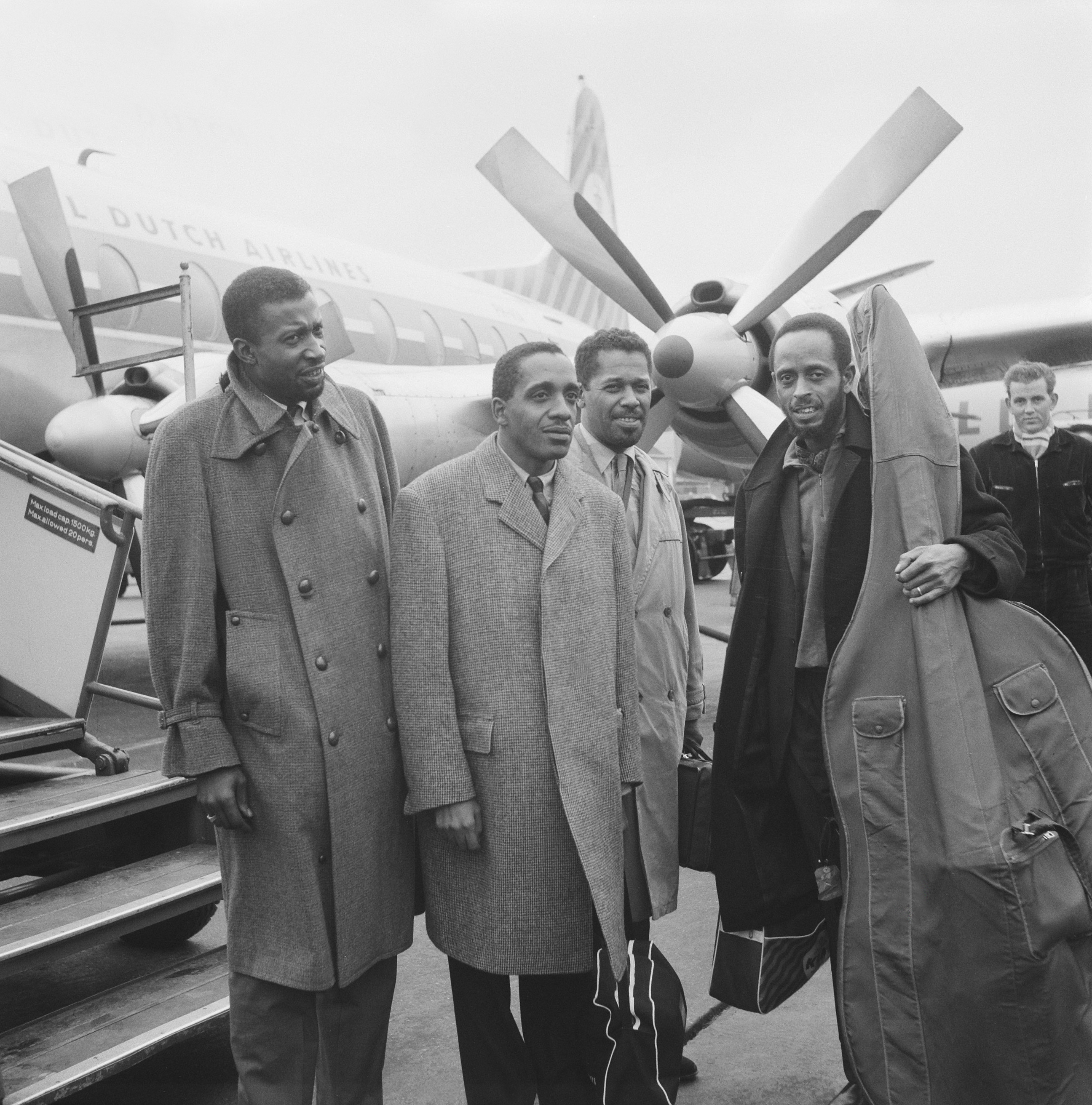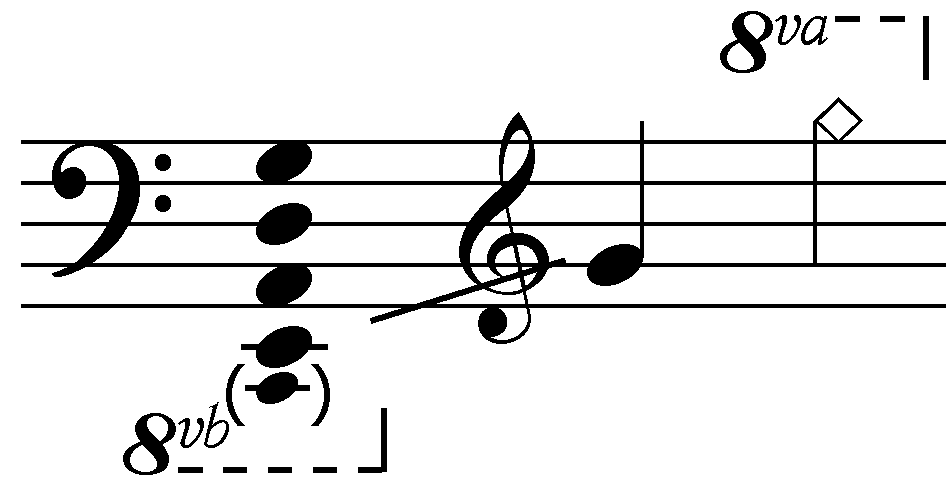|
Miles Davis All Stars, Volume 1
''Miles Davis All Stars, Volume 1'' (PRLP 196) is a 10 inch LP album by Miles Davis, released by Prestige Records. The two side-long tracks on this LP, and two others, were recorded at Rudy Van Gelder's Studio, Hackensack, New Jersey, on December 24, 1954. Miles Ahead: A Miles Davis Website, accessed May 28, 2014. This was the first of two 10" LPs sourced from the same session, which featured vibraphonist , pianist , bassist |
Miles Davis
Miles Dewey Davis III (May 26, 1926September 28, 1991) was an American trumpeter, bandleader, and composer. He is among the most influential and acclaimed figures in the history of jazz and 20th-century music. Davis adopted a variety of musical directions in a five-decade career that kept him at the forefront of many major stylistic developments in jazz. Born in Alton, Illinois, and raised in East St. Louis, Davis left to study at Juilliard in New York City, before dropping out and making his professional debut as a member of saxophonist Charlie Parker's bebop quintet from 1944 to 1948. Shortly after, he recorded the '' Birth of the Cool'' sessions for Capitol Records, which were instrumental to the development of cool jazz. In the early 1950s, Davis recorded some of the earliest hard bop music while on Prestige Records but did so haphazardly due to a heroin addiction. After a widely acclaimed comeback performance at the Newport Jazz Festival, he signed a long-term co ... [...More Info...] [...Related Items...] OR: [Wikipedia] [Google] [Baidu] |
Modern Jazz Quartet
The Modern Jazz Quartet (MJQ) was a jazz combo established in 1952 that played music influenced by classical, cool jazz, blues and bebop. For most of its history the Quartet consisted of John Lewis (piano), Milt Jackson (vibraphone), Percy Heath (double bass), and Connie Kay (drums). The group grew out of the rhythm section of Dizzy Gillespie's big band from 1946 to 1948, which consisted of Lewis and Jackson along with bassist Ray Brown and drummer Kenny Clarke. They recorded as the Milt Jackson Quartet in 1951 and Brown left the group, being replaced on bass by Heath. During the early-to-mid-1950s they became the Modern Jazz Quartet, Lewis became the group's musical director, and they made several recordings with Prestige Records, including the original versions of their two best-known compositions, Lewis's " Django" and Jackson's " Bags' Groove". Clarke left the group in 1955 and was replaced as drummer by Connie Kay, and in 1956 they moved to Atlantic Records and made ... [...More Info...] [...Related Items...] OR: [Wikipedia] [Google] [Baidu] |
Prestige Records Albums
Prestige refers to a good reputation or high esteem; in earlier usage, ''prestige'' meant "showiness". (19th c.) Prestige may also refer to: Arts, entertainment and media Films * ''Prestige'' (film), a 1932 American film directed by Tay Garnett: woman travels to French Indochina to meet up with husband * ''The Prestige'' (film), a 2006 American thriller directed by Christopher Nolan Music * Prestige Records, American jazz record label * ''Prestige'' (Daddy Yankee album), a 2012 album by Daddy Yankee * ''The Prestige'' (album) Other uses in arts, entertainment, and media * ''Prestige'' (magazine), a Lebanese French-language women's fashion quarterly *Prestige, the final portion of a magic trick, typically a showy flourish (17th c.) *'' The Prestige'', 1995 novel by Christopher Priest Brands and enterprises * Prestige (beer), a Haitian lager * Citi Prestige, a premium Citibank credit card * Ibanez RG Prestige, a brand of guitars manufactured by Ibanez *Plaxton Prestige, a si ... [...More Info...] [...Related Items...] OR: [Wikipedia] [Google] [Baidu] |
Miles Davis Albums
The mile, sometimes the international mile or statute mile to distinguish it from other miles, is a British imperial unit and United States customary unit of distance; both are based on the older English unit of length equal to 5,280 English feet, or 1,760 yards. The statute mile was standardised between the British Commonwealth and the United States by an international agreement in 1959, when it was formally redefined with respect to SI units as exactly . With qualifiers, ''mile'' is also used to describe or translate a wide range of units derived from or roughly equivalent to the Roman mile, such as the nautical mile (now exactly), the Italian mile (roughly ), and the Chinese mile (now exactly). The Romans divided their mile into 5,000 Roman feet but the greater importance of furlongs in Elizabethan-era England meant that the statute mile was made equivalent to or in 1593. This form of the mile then spread across the British Empire, some successor states of which conti ... [...More Info...] [...Related Items...] OR: [Wikipedia] [Google] [Baidu] |
1955 Albums
Events January * January 3 – José Ramón Guizado becomes president of Panama. * January 17 – , the first nuclear-powered submarine, puts to sea for the first time, from Groton, Connecticut. * January 18– 20 – Battle of Yijiangshan Islands: The Chinese Communist People's Liberation Army seizes the islands from the Republic of China (Taiwan). * January 22 – In the United States, The Pentagon announces a plan to develop intercontinental ballistic missiles (ICBMs), armed with nuclear weapons. * January 23 – The Sutton Coldfield rail crash kills 17, near Birmingham, England. * January 25 – The Presidium of the Supreme Soviet of the Soviet Union announces the end of the war between the USSR and Germany, which began during World War II in 1941. * January 28 – The United States Congress authorizes President Dwight D. Eisenhower to use force to protect Formosa from the People's Republic of China. February * February 10 – The United States Seventh Fleet helps t ... [...More Info...] [...Related Items...] OR: [Wikipedia] [Google] [Baidu] |
Drum Kit
A drum kit (also called a drum set, trap set, or simply drums) is a collection of drums, cymbals, and other auxiliary percussion instruments set up to be played by one person. The player (drummer) typically holds a pair of matching drumsticks, one in each hand, and uses their feet to operate a foot-controlled hi-hat and bass drum pedal. A standard kit may contain: * A snare drum, mounted on a stand * A bass drum, played with a beater moved by a foot-operated pedal * One or more tom-toms, including rack toms and/or floor toms * One or more cymbals, including a ride cymbal and crash cymbal * Hi-hat cymbals, a pair of cymbals that can be manipulated by a foot-operated pedal The drum kit is a part of the standard rhythm section and is used in many types of popular and traditional music styles, ranging from rock and pop to blues and jazz. __TOC__ History Early development Before the development of the drum set, drums and cymbals used in military and orchestral mu ... [...More Info...] [...Related Items...] OR: [Wikipedia] [Google] [Baidu] |
Double Bass
The double bass (), also known simply as the bass () (or #Terminology, by other names), is the largest and lowest-pitched Bow (music), bowed (or plucked) string instrument in the modern orchestra, symphony orchestra (excluding unorthodox additions such as the octobass). Similar in structure to the cello, it has four, although occasionally five, strings. The bass is a standard member of the orchestra's string section, along with violins, viola, and cello, ''The Orchestra: A User's Manual'' , Andrew Hugill with the Philharmonia Orchestra as well as the concert band, and is featured in Double bass concerto, concertos, solo, and chamber music in European classical music, Western classical music.Alfred Planyavsky [...More Info...] [...Related Items...] OR: [Wikipedia] [Google] [Baidu] |
Piano
The piano is a stringed keyboard instrument in which the strings are struck by wooden hammers that are coated with a softer material (modern hammers are covered with dense wool felt; some early pianos used leather). It is played using a musical keyboard, keyboard, which is a row of keys (small levers) that the performer presses down or strikes with the fingers and thumbs of both hands to cause the hammers to strike the strings. It was invented in Italy by Bartolomeo Cristofori around the year 1700. Description The word "piano" is a shortened form of ''pianoforte'', the Italian term for the early 1700s versions of the instrument, which in turn derives from ''clavicembalo col piano e forte'' (key cimbalom with quiet and loud)Pollens (1995, 238) and ''fortepiano''. The Italian musical terms ''piano'' and ''forte'' indicate "soft" and "loud" respectively, in this context referring to the variations in volume (i.e., loudness) produced in response to a pianist's touch or pressure on ... [...More Info...] [...Related Items...] OR: [Wikipedia] [Google] [Baidu] |
Vibraphone
The vibraphone is a percussion instrument in the metallophone family. It consists of tuned metal bars and is typically played by using mallets to strike the bars. A person who plays the vibraphone is called a ''vibraphonist,'' ''vibraharpist,'' or ''vibist''. The vibraphone resembles the steel marimba, which it superseded. One of the main differences between the vibraphone and other keyboard percussion instruments is that each bar suspends over a resonator tube containing a flat metal disc. These discs are attached together by a common axle and spin when the motor is turned on. This causes the instrument to produce its namesake tremolo or vibrato effect. The vibraphone also has a sustain pedal similar to a piano. When the pedal is up, the bars produce a muted sound; when the pedal is down, the bars sustain for several seconds or until again muted with the pedal. The vibraphone is commonly used in jazz music, in which it often plays a featured role, and was a defining eleme ... [...More Info...] [...Related Items...] OR: [Wikipedia] [Google] [Baidu] |
Trumpet
The trumpet is a brass instrument commonly used in classical and jazz ensembles. The trumpet group ranges from the piccolo trumpet—with the highest register in the brass family—to the bass trumpet, pitched one octave below the standard B or C trumpet. Trumpet-like instruments have historically been used as signaling devices in battle or hunting, with examples dating back to at least 1500 BC. They began to be used as musical instruments only in the late 14th or early 15th century. Trumpets are used in art music styles, for instance in orchestras, concert bands, and jazz ensembles, as well as in popular music. They are played by blowing air through nearly-closed lips (called the player's embouchure), producing a "buzzing" sound that starts a standing wave vibration in the air column inside the instrument. Since the late 15th century, trumpets have primarily been constructed of brass tubing, usually bent twice into a rounded rectangular shape. There are many di ... [...More Info...] [...Related Items...] OR: [Wikipedia] [Google] [Baidu] |
Bags' Groove (composition)
"Bags' Groove" is a jazz composition by Milt Jackson. It was first recorded by the Milt Jackson Quintet on April 7, 1952 for Blue Note Records, later released on '' Wizard of the Vibes''. Lou Donaldson, John Lewis, Percy Heath and Kenny Clarke were on that date. Next was the Mat Mathews quintet with Herbie Mann (July 6, 1953), Bud Powell (September 1953), Mat Mathews again (September 1, 1953), a bootleg version by the Modern Jazz Quartet (October 31, 1953), the Lighthouse All-Stars (February 25, 1954), bassist Buddy Banks' quartet (with Bob Dorough and Roy Haynes in October 1954) and then Jay Jay Johnson and Kai Winding (December 3, 1954). Other important recordings include those by Ray Bryant, Oscar Peterson, Al Haig, George Russell, Mal Waldron. Perhaps the most famous recording was the one by Miles Davis's quintet in 1954. The recording was released on the 1957 album '' Bags' Groove''. This version is famous for fact that Thelonious Monk did not play behind Miles during hi ... [...More Info...] [...Related Items...] OR: [Wikipedia] [Google] [Baidu] |
Miles Davis And The Modern Jazz Giants
''Miles Davis and the Modern Jazz Giants'' (PRLP 7150) is an album by Miles Davis, released on Prestige Records in 1959. Most of the material comes from a session on December 24, 1954, featuring Thelonious Monk and Milt Jackson, and had been previously released in the discontinued ten inch LP format. "Swing Spring" was originally released on the 10"LP ''Miles Davis All Stars, Volume 1'' (PRLP 196), and "Bemsha Swing" and "The Man I Love" (take 2) had been previously released on '' Volume 2'' (PRLP 200). " 'Round Midnight" is newly released, and comes from the same sessions by Davis's new quintet in 1956 which resulted in ''Steamin' with the Miles Davis Quintet'' (PRLP 7200) and three other albums to fulfill Davis's contract with Prestige. The 1954 session The 1954 session is essentially Davis accompanied by the Modern Jazz Quartet, with Monk in place of John Lewis. Notable as the only time Thelonious Monk made a studio recording with Davis—the two men did not get on well, as ... [...More Info...] [...Related Items...] OR: [Wikipedia] [Google] [Baidu] |






